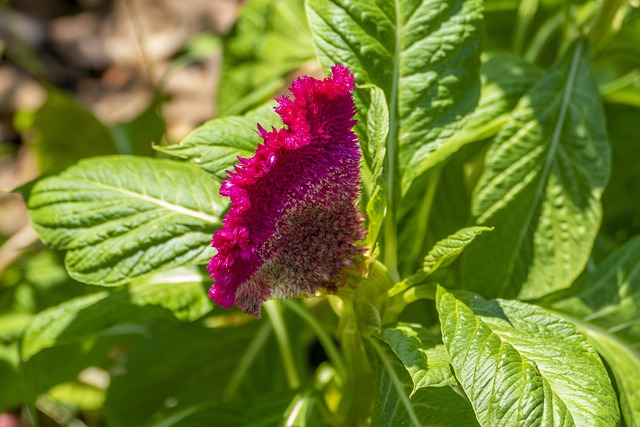Celosia is an edible vegetable that belongs to the family – Amaranthaceae, and it has different species.
However, the most popularly cultivated species is the Celosia argentea.
Celosia argentea is not only eaten as vegetables, it also has medicinal uses.
It has different common names according to the areas it’s grown
Celosia can be planted both indoors in a pot and outdoor in the garden.
While the plant will flower within a year, it can self-seed, hence its life is extended to the second year, hence can be regarded as both annual and perennial.
In western Nigeria for example where it is largely grown, it is locally referred to as ‘green’ or White soko’ or ‘sokoyoto’.
Origin of Celosia
The center of origin is India. It is widely grown in Nigeria and other parts of west Africa.
In the US here, it is cultivated as an ornamental plant while it’s cultivated purposely for food consumption in Africa.
Ecology of Celosia argentea
Celosia argentea is tolerant of a wide range of soil conditions, although a high level of organic material in the soil is required for the production of optimum yields, particularly from the green form.
A temperature range of 25-30°C is suitable.
While the plant thrives well in a hot climate, it requires moist soil to germinate.
It should also not be planted when the soil is too wet.
Both green and red varieties grow well at low altitudes, where temperature fluctuations are limited.
Botany of Celosia argentea
Celosia argentea is an erect, short-lived annual herb, which grows up to 150cm in height.
The leaves are alternate and are light green to dark green in the green forms.
The leaves of red ‘soko’ – (Nigerian local name) are pink and have a prominent dark purple marking.
The flowering spike is pink, becoming white when the seeds reach maturity.
The seeds are small, about 1mm in diameter, and black in color.
Celosia argentea Cultural Practices
For Celosia argentea leaf production, seeds are broadcast in seedbeds, which may be temporarily mulched with dried grass; this should be removed after germination has occurred.
Seedlings are transplanted when they are 10-15cm tall to prepare beds at a spacing of 15-30cm apart from each way.
For Celosia argentea seed production, a wider spacing of 70x 45 cm is used.
Irrigation is essential for dry season planting so it can grow well, fertilization may also be added t enhance production.
Harvesting Celosia argentea
For Celosia argentea leaf production, harvesting can commence at 30-40 days after sowing, initially by thinning out closely planted seedlings but later removing the terminal shoots from the remaining plants.
This encourages lateral branching and provides shoots and leaves for subsequent harvests.
Seeds are produced 90-120 days from sowing but total seed yield is normally less than that of most species of Amaranths.
Yield
Generally, productions are in green form, and yield is about 16t to 20t/ha.
In the red form, the yield is between 28t to 35t/ha.
Uses
The leaves and young shoots of both forms are used in soups and stews.
The leaves contain high levels of calcium, phosphorus, and iron.
Like all vegetables, water is over 80% and cannot be stored for an appreciable length of time.
Diseases and Pests
No serious leaf diseases and pests have been reported.








